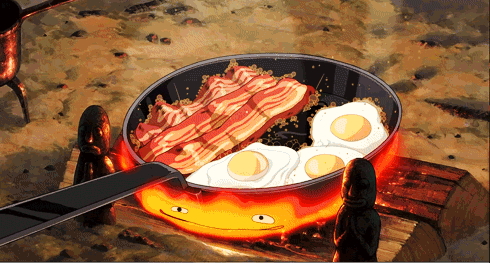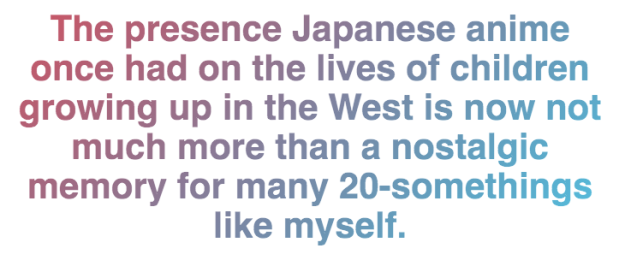Posted by Chinar Mehta
There is not much I can write about Hayao Miyazaki that hasn’t been written before, or his sense of animation that is simply exemplary. It is detailed, very realistic in spite of the heavy use of watercolors and animation, and most of the times, aesthetically beautiful.
The characters in his films are well-rounded and interesting. The treatment of his female characters in particular is not like most other filmmakers. They are given importance while also remaining fair and balanced with the male characters, treating gender as incidental. It is refreshing to watch a movie like that.
But one of the things in Miyazaki’s films that is endlessly captivating is how he weaves food into his stories. Indeed, for years Miyazaki’s films have been peppered with beautiful references related to cooking and cuisine. Numerous times throughout his films, food is a comfort — whether as a safety, a guarantee, familiarity or even as nostalgia. Cooking is an act performed out of love and duty, and not just to satisfy one’s hunger.

Hardworking Young Women
In From up on Poppy Hill, the character Umi cooks food for the entire household, and is quite good at it. She prepares her own elaborate lunches to take to school daily. Even something as simple as spooning rice out of a container is not devoid of the steam that the rice is producing.
A simple breakfast of ham, eggs and vegetables shows the communal eating that Umi was responsible for, seeing as her mother was away studying in America. We see her dream of her mother in the kitchen, showing both Umi’s fear and her need for a parenting figure. It was in the act of cooking where her mother’s love was most missed. The people of the household depended on Umi for delicious food, and she yearned for that same dependence on her mother, especially during times of distress.
However, she remains dependable with her daily cooking at home, and is sometimes the only person to be on kitchen duty. In fact, it is noted that her school extracurricular activities were a hindrance to her duties at home, and in spite of that Umi remains determined to get it all done, managing to accomplish both tasks every day. This determination makes Umi instantly likable. This familiar theme of a hardworking young women is repeated in a lot of Miyazaki films — even in Ponyo, in the form of Lisa, Sosuke’s mother.

Eating Together, A Common Bond
The communal eating is emphasized several times, as we also see this when the household sits down to eat. This is also a nostalgic theme that is brought to life by animated food. Eating together is of significant importance in many cultures throughout the world. It shows camaraderie and a deeper notion of familial ties.
It is quite commonly known that families who eat together, stay together. However, inFrom up on Poppy Hill, Umi lives in a boarding house, and in spite of no familial ties with each other, the women there are firm friends who tend to eat their meals as a group. The appreciation of diversity of women living under the one roof is apparent and does not fail to make them multidimensional characters.
As a vegetarian, the feelings of hunger within me that Miyazaki films evoke are confusing. The clip below of Umi frying fish is deliciously distracting in terms of what real food is like. Fish need not be something I actually like in real life for me to enjoy seeing it being cooked in thick, bubbling oil, the sizzling sound making it a very realistic expression of food.

Good For The Soul
In Ponyo too, food is comfort. After surviving a major flood in the town, Ponyo (a goldfish who has turned into a human child), five-year-old Sosuke and his mother Lisa return home. There is no electricity and they are dripping wet. In such a state, all they can make are noodles and hot chocolate with honey. It is this very notion of comfort food that Miyazaki captures the essence of. It is similar to craving hot soup when it’s cold outside.

This is the first time Ponyo has ever had honey or real food (other than a little ham Sosuke feeds her when she is still a fish), and her excitement for the food is infectious. In the film, little motherly affection was shown to her while she was still a fish. Someone cooking for her is something she has never experienced, especially such a satisfying meal after a difficult day. Lisa is generous and loving toward her. Even with disaster lurking outside, food makes the inside of their home feel warm and gratifying.
Here is also a little clip from Howl’s Moving Castle, with some exceptional-looking bacon and eggs sizzling in the pan.
The Deadly Sin Of Gluttony
On the other hand, Spirited Away shows food in a slightly contrarian tone. Chihiro’s parents would never have transformed into pigs had they listened to her warnings about paying for the feast. The spread was tempting and Chihiro’s parents gave into the temptation, and here, it is the image of gluttony that Miyazaki is antagonizing us with.

The change of her parents into farm animals because of the food reminded me ofAnimal Farm by George Orwell.
In Spirited Away, food means excess, and Chihiro lives in fear and confusion, trying to save her parents somehow. The majestic feasts are not at all tempting for her now that she feels she has lost her mother and father forever, and might never find them. No amount of lavish meal could make her feel better, and there is a lot of food to spare. Even for the perspective of the viewer, the spirit world in this film is scary and uncomfortable, and the food is definitely not trustworthy.
This distrust of food is unique and surprising, but is in keeping with Miyazaki’s use of food as expression, whether that expression is discomfort, comfort, or both — something the filmmaker is very skilled at doing. Comfort food is called comfort food for a reason, and not everything is comfortable. A lot of cultural factors shape what is considered comfort food. Homely meals, generally, are comfort foods. A big, heavy meal every time one eats is exhausting. Comfort food is not fancy — it is simple and everyday — rice, meat, eggs and such for Japanese culture.
Food can be observed in The Cat Returns, where Haru doesn’t have time to eat breakfast and is shown visibly tempted by it, in spite of the fact that it is a simple meal of eggs and vegetables on bread, garnished with succulent cherry tomatoes.

When Haru finds herself in the kingdom of the cats with a feast before her, although it’s all the more suited to a cat’s palate, she is gloomy and refuses to eat. That doesn’t change the fact, however, that the feast itself is picturesque.

Nourish The Body
On the other hand, in Grave of the Fireflies, even a small tin of candy or a jar of pickled plums holds value for the comfort of both Seita and Setsuko. It is the only thing left of their home and their previously easy lives. They hold onto these treasures as their war-torn surrounds only get worse. Here, it is the memory of food that is so redolent, with the desperate Seito and Setsuko seen sharing the last of their candy.

It is rare to see what filmmakers do with food in their films. It is undeniably one of the most important aspects of people’s lives. A lot of the audiences are people who are lucky to eat three meals a day. Food is the sustenance that is a part of every celebration or sadness. The lack of food brings sadness and gloom, and the excess of it seems wasteful and extravagant, giving filmmakers a great tool with which to describe the world they are recreating.
Fortunately for Miyazaki, he has already figured it out.



